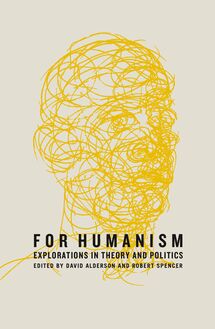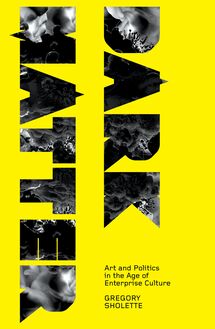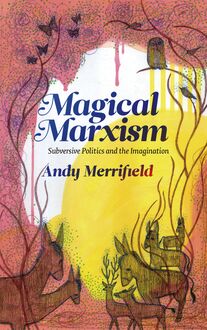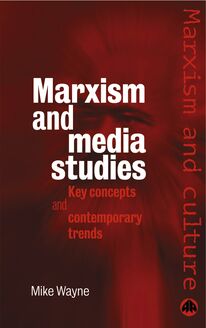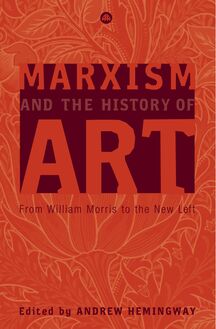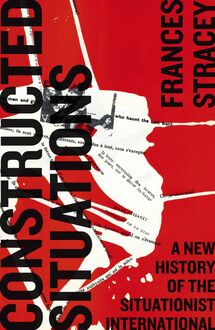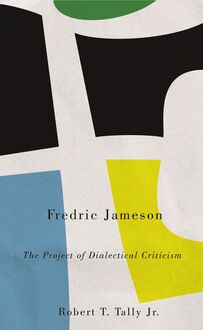Constructed Situations , livre ebook
138
pages
English
Ebooks
2014
Vous pourrez modifier la taille du texte de cet ouvrage
Obtenez un accès à la bibliothèque pour le consulter en ligne En savoir plus
Découvre YouScribe en t'inscrivant gratuitement
Découvre YouScribe en t'inscrivant gratuitement
138
pages
English
Ebooks
2014
Vous pourrez modifier la taille du texte de cet ouvrage
Obtenez un accès à la bibliothèque pour le consulter en ligne En savoir plus
Publié par
Date de parution
20 octobre 2014
Nombre de lectures
1
EAN13
9781783712243
Langue
English
This book by Frances Stracey offers itself up as the 'first historiography of constructed situations'. Within it are new insights into the movement, and with them, a sense of relevance to political situations and practice today. As an archivist, Stracey uncovered new documents which, amongst other things, revealed how the SI related to representations of sexuality; and is able to discuss whether they could be considered as feminists or not. She also looked at their famous motto 'Never Work' and again shows how alienated labour is even more relevant to us today.
Constructed Situations is not a history of celebrated personalities, or cultural influences, or political circumstances. It is instead an open door to one of the most influential art movements in modern history, and an invitation for us to reclaim inspiration from this ubiquitous movement.
List of Figures
Series Preface
Preface
Acknowledgements
Introduction: Lessons in Failure
Excursus I: The Society of the Spectacle
Excursus II: Constructed Situations
Reconstructing Situations
1. Surviving History: A Situationist Archive
2. Industrial Painting: Towards a Surplus of Life
3. Destruktion af RSG-6: The Latest Avant-Garde
4. Consuming the Spectacle: The Watts Riot and a New Proletariat
5. Situationist Radical Subjectivity and Photo-Graffiti
6. The Situation of Women
Coda: Learning from the SI
Notes
Index
Publié par
Date de parution
20 octobre 2014
Nombre de lectures
1
EAN13
9781783712243
Langue
English
CONSTRUCTED SITUATIONS
Marxism and Culture
Series Editors:
Professor Esther Leslie, Birkbeck, University of London
Professor Michael Wayne, Brunel University
Red Planets:
Marxism and Science Fiction
Edited by Mark Bould and China Miéville
Marxism and the History of Art:
From William Morris to the New Left
Edited by Andrew Hemingway
Magical Marxism:
Subversive Politics and the Imagination
Andy Merrifield
Philosophizing the Everyday:
The Philosophy of Praxis and the Fate of Cultural Studies
John Roberts
Dark Matter:
Art and Politics in the Age of Enterprise Culture
Gregory Sholette
Fredric Jameson:
The Project of Dialectical Criticism
Robert T. Tally Jr.
Marxism and Media Studies:
Key Concepts and Contemporary Trends
Mike Wayne
CONSTRUCTED SITUATIONS
A New History of the Situationist International
Frances Stracey
For Peanut
First published 2014 by Pluto Press
345 Archway Road, London N6 5AA
www.plutobooks.com
Copyright © the Estate of Frances Stracey 2014
British Library Cataloguing in Publication Data
A catalogue record for this book is available from the British Library
ISBN 978 0 7453 3527 8 Hardback
ISBN 978 0 7453 3526 1 Paperback
ISBN 978 1 7837 1223 6 PDF eBook
ISBN 978 1 7837 1225 0 Kindle eBook
ISBN 978 1 7837 1224 3 EPUB eBook
Library of Congress Cataloging in Publication Data applied for
This book is printed on paper suitable for recycling and made from fully managed and sustained forest sources. Logging, pulping and manufacturing processes are expected to conform to the environmental standards of the country of origin.
10 9 8 7 6 5 4 3 2 1
Typeset by Stanford DTP Services, Northampton, England
Text design by Melanie Patrick
Simultaneously printed digitally by CPI Antony Rowe, Chippenham, UK and Edwards Bros in the United States of America
CONTENTS
List of Figures
Series Preface
Preface
Acknowledgements
Introduction: Lessons in Failure
Excursus I: The Society of the Spectacle
Excursus II: Constructed Situations
Reconstructing Situations
1. Surviving History: A Situationist Archive
2. Industrial Painting: Towards a Surplus of Life
3. Destruktion af RSG-6: The Latest Avant-Garde
4. Consuming the Spectacle: The Watts Revolt and a New Proletariat
5. Situationist Radical Subjectivity and Photo-Graffiti
6. The Situation of Women
Coda: Learning from the SI
Notes
Index
FIGURES
1.1–1.8
Guy-Ernest Debord and Asger Jorn, pages from Mémoires , 1959
1.9
Guy-Ernest Debord and Asger Jorn, endpapers (inside of the front cover) from Mémoires , 1959
2.1
A section of Industrial Painting, entitled Le acque del Nilo non passano ad Alba (The waters of the Nile do not go to Alba), 1958
2.2
An unwound roll of Industrial Painting – the longest ever made – untitled, 1958
2.3 and 2.4
Industrial painting machine and collective assembly line at work
2.5
Giuseppe Pinot-Gallizio preparing colours
2.6
Giuseppe Pinot-Gallizio at the opening of his personal show at Galerie Van de Loo in Munich, 1959
3.1
Guy Debord, Directive No. 2 [‘RÉALISATION DE LA PHILOSOPHIE’], 1963
3.2
J.V. Martin, 2h[ours] 15[minutes] after the Start of the Third World War , from ‘Thermonuclear Maps’ series, 1963
3.3
Michèle Bernstein, Victory of the Commune of Paris , from ‘Victory’ series, 1963 (detail)
4.1
‘CRITIQUE DE L’URBANISME (Supermarket à Los Angeles, août 1965)’ from internationale situationniste , issue 10, 1966
4.2
‘PLAYING WITH RIFLED CASH REGISTER’ from internationale situationniste , issue 10, 1966
4.3
‘L’INTÉGRATION, A QUOI?’ (‘THE INTEGRATION OF WHAT?’) from internationale situationniste , issue 10, 1966
4.4
‘“ALL THIS WORLD IS LIKE THIS VALLEY CALLED JARAMA” (CHANSON DU BATAILLON LINCOLN)’ from internationale situationniste , issue 10, 1966
5.1
[Riot police shooting] Paris, 1968
5.2
[‘Sous les pavés, la plage’] Paris, May 1968
5.3
[‘Je jouis dans les pavés’] Paris, May 1968
5.4
[‘Soyons cruels!’] Paris, Sorbonne, May 1968
5.5
‘La Récupération Vulgaire (affiche pour un film commercial, automne 1968)’ from internationale situationniste , issue 12, 1969
5.6
[‘Cache-toi, objet! Baisse-toi et broute!’] (Piss [or fuck] off, object! Fall and hurt yourself!) Paris, Sorbonne, May 1968
6.1
[In the shower, playing with water] from internationale situationniste , issue 1, 1958
6.2
[In overcoat] from internationale situationniste , issue 1, 1958
6.3
[On the beach] from internationale situationniste , issue 1, 1958
6.4
[Standing in bikini] from internationale situationniste , issue 1, 1958
6.5
[Sitting in bikini] from internationale situationniste , issue 1, 1958
6.6
[Brigitte Bardot reclining on horseback] from internationale situationniste , issue 1, 1958
6.7
[Naked on boat] from internationale situationniste , issue 1, 1958
6.8
[Reclining in hammock] from internationale situationniste , issue 1, 1958
6.9
[ J.V. Martin modification of Christine Keeler image] from internationale situationniste , issue 1, 1958
C.1
etoy, Share price developments during TOYWAR, 1999/2000
C.2
Desktop Theatre, Spectacled Society , 2000
C.3
Krzysztof Wodiczko, The Tijuana Projection , 2001
C.4
Surveillance Camera Players, Performance of George Orwell’s 1984 , 1998
C.4.1
Title board
C.4.2
The telescreen reminds you that ‘Big Brother is Watching You’
C.4.3
Julie and Winston are the dead
C.4.4
Winston is executed by O’Brien
C.5
Guy Debord, NE TRAVAILLEZ JAMAIS, 1953
SERIES PREFACE
‘Marxism and Culture’ is the name of our book series. The Situationists stand askew to both these terms and that is why they are of interest to us. The Situationists ingested Marx, his dialectics, his commitment to revolution, his searing tones of critique and caustic prose, his chiasmic formulations. But they were not Marxologists, defenders of the faith. Marxism came back to life in their raging analyses. They were interested in slamming into their moment, making it liveable, handling Marx as if handling stolen goods. And, as for culture, that was something they made, destroyed, rated above all else and despised, sometimes sequentially, sometimes all at the same time. They were more aesthetic than the aesthetes, more luxurious than the deluxe-edition types. But in a way that junked, mocked, remixed or scorned the culture of the past and present. They paid homage to a few and upset more.
The Situationists remain a resource and a rebuke to any efforts to think and act as revolutionaries in the field of culture. Despite their critique of recuperation, they provide a touchstone for attempts to give cultural expression to revolutionary ideas – even after the designation of Guy Debord’s archive as a ‘National Treasure’ of France, when it was acquired, in 2011, by the Bibliothèque nationale de France. History may have rendered positive the most negative of critics and the movement he mobilized, but their successes and failure, which is a social one, still provide many pertinent lessons.
The Situationists were the most cultured of all and the most revolutionary. It was the force-field between these two aspects that powered their thought. Even when art was ostensibly abandoned in favour of theoretical-political analysis, it shadowed the political theory as a – or its – negative image. Too frequently the counter-parts of art and politics have been broken apart in interpretations of the Situationist legacy: artists alight on the aesthetic aspects, the avant-garde techniques, the questions of recuperation of culture; politicos debate the questions of form, the analysis of the state, the legitimacy or not of the vanguard party. Sometimes the praxis and theory of the Situationists floats free of the demands of its moment, in dehistoricized accounts. Frances Stracey’s Constructed Situations holds it all in play and, more than that, it observes the shingling of aesthetics in politics and sets everything firmly in specific ‘constructed situations’ that constitute Situationist theoretical practice. These collective acts of counter-cultural and political assault include photo-graffiti, industrial painting, the Jorn–Debord collaboration Mémoires , the first and only Situationist group exhibition titled Destruktion af RSG-6, held at the Galerie EXI in Odense, Denmark in June 1963, writing and editing a journal, inventing strategies for evading the archive, and theorizing and advocating riots. The scintillating moments of cultural and revolutionary collaboration that comprise the chapters here explore the Situationists’ mode of ‘phenomeno-praxis’, in which art and politics are united in a lived event.
The ideas in this book began life as a thesis at University College London, titled ‘Pursuit of the Situationist Subject’. They evolved substantially after the thesis’ submission in 2001, as Stracey, who had studied art and had worked as a medical photographer and librarian, spent several years turning parts of the chapters into journal articles or contributions to edited volumes. In 2005, she reconceived the thesis as a book organized around the notion of ‘constructed situations’. She managed to complete a full draft of the book before dying of cancer in November 2009.
The fact that it has taken some time for the book to be published is no disadvantage. The pressure points of our moment are caught here as they form, rendering the book prescient, yet not sectarian. There is exploration of what a materialist Marxist feminism might look like and how it might relate to representations of sexuality. There are discussions of labour and its refusal, which address some of the debates around modes of labouring, immaterial labour, over- and under-employment and art making as a form of industry, in all senses. Under the motto ‘Never Work’, a critical cartography of shifting work relations proposes how the production of life might appear
